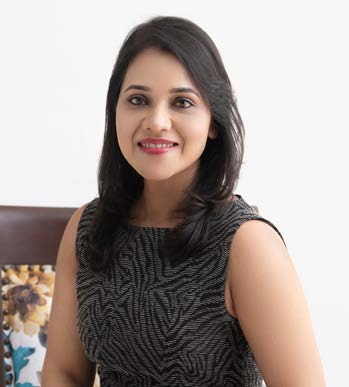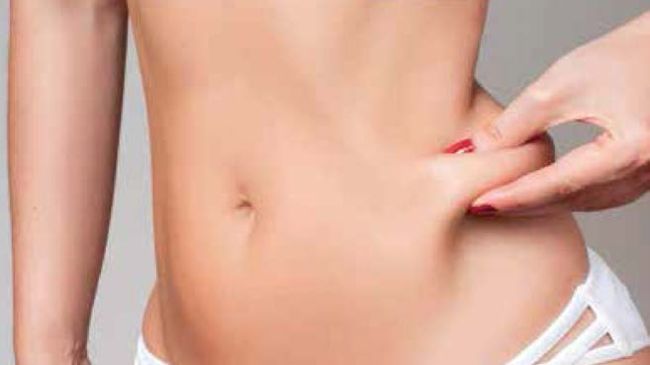Aesthetic Plastic Surgeon
LIPOSUCTION

Dr Priya Bansal Consultant Cosmetic Plastic Surgeon Rosewalk Healthcare CK Birla Hospital Fortis La Femme 11 years in practice
Dr Priya Bansal, MBBS, MS (General Surgery), DNB (Plastic Surgery), is a master in her field and has also won a gold medal for her surgical skills. Her focus areas and procedures include breast surgeries (breast augmentation, breast reduction, breast lift); mommy makeover; body contouring procedures (liposculpting, six pack abs, hourglass shaping, buttock augmentation); and genital rejuvenation (surgical and non-surgical vaginoplasty, labiaplasty). She is known for her personalised counselling, compelling results, and unrivalled patient experience.
Know more about liposuction from Dr Bansal:
Who is a good candidate for a liposuction? What is the type of patient you typically see for this procedure?
For a patient to be a liposuction candidate, the most important thing is realistic expectations. Liposuction is not a weight loss alternative, instead it works wonders to get rid of areas of stubborn fat deposits or for providing better contours and proportions to the body. The patient should also be within 30 per cent of his ideal body weight, should have good muscle tone and skin elasticity for best results.
In our practice, men and women almost equally seek liposuction procedures (40/60); gynaecomastia being the most often sought procedure for men and hourglass shaping for women. Most of the patients desiring the procedure are in their 30s.
How can best results be derived from this treatment? Tell us about the surgical technique adopted by you?
For best results, the most important thing is choosing the right candidate. Liposuction on an obese patient with poor muscle tone and loose hanging skin will only tend to aggravate the problem and give poor results. Second important thing is proper planning and marking of the patient, taking into consideration patients expectations. And finally, being well versed with the latest technologies and incorporating its use in your practice improves the results extraordinarily.
We have been evolving in our technique of liposuction gradually and now we have formulated our own method of PURE contouring where we use Power assisted, Ultrasonic assisted and Radiofrequency Enhanced tools. We have combined the use of these tools with the SAFE (Separation, Aspiration, Fat Equalisation) method of liposuction to give the best results to our patients. We first infiltrate emulsifying fluid with the help of Power assisted machine (Microaire), attached to a power pump, which also simultaneously separates the fat (Separation). This step results in better distribution of the fluid in all spaces, leading to better vasoconstriction and less bleeding. The fat is further emulsified using Ultrasound assisted machine (VASER) which melts the fat without injuring the surrounding structure as the device is fat selective. This device also leads to skin contraction by heating the dermis. This melted fat is then suctioned (Aspirated), using the power assisted machine attached to a suction device. Then the remnant fat in the suctioned area is equalised (Fat Equalisation) using a basket cannula so as to avoid creating deformities which is a very common complication of liposuction seen otherwise. And the final step involves using a Radiofrequency based device (BodyTite) to cause skin contraction by stimulating the dermal collagen remodelling. Often, when we do Hi definition liposuction like creating six pack abs or carving hourglass figure, we harvest some of this suctioned fat in a sterile canister and inject it in the desired areas like the crests of abs, breasts and buttocks. The appropriate term is liposculpting where we work with body fat to sculpt the body shape.
What is the recovery time for a liposuction surgery and what is the posttreatment care involved?
Depending upon the number of areas operated upon, the amount of fat suctioned and duration of surgery, liposuction may be a day care procedure or require overnight admission. The patient is made to wear a customised compression garment, which needs to be worn for six weeks. This helps to minimise swelling and enhance skin contraction. Antibiotics and analgesics are prescribed for a period of five to seven days. There is some discomfort and pain from the procedure that is taken care of with these medications. Bruising settles by two weeks and swelling keeps improving over the next couple of months. The patient can resume normal activities in 48 hours, whereas a week may be required to resume strenuous activities.
Any contraindications involved that one should be aware off? Also, is there anything the patient must not do after the procedure?
Heart diseases, kidney or liver diseases, uncontrolled diabetes or hypertension, thyroid disorders, bleeding or coagulation disorders, pregnancy are few diseases, which are general contraindications for any kind of surgical procedure, and also for liposuction. Blood thinners or any kind of supplements need to be stopped a week prior to surgery. Smoking needs to be stopped at least two weeks before surgery. In our practice we also consider patients with excess loose hanging skin as relative contraindication, because they will never get the desired results with liposuction. They are candidates for excisional procedures and should be guided towards the same.
For a week post the liposuction procedure, a few ‘don’ts’ include avoiding smoking, herbal supplements, strenuous activities and long hours air travel. .
Which do you consider as among your most challenging as well as successful case studies for this treatment?
Each case of liposuction is a challenge in its own as individual body habitus is different and one size cannot fit all. But if I talk of a particular case, there was one male patient in his 30s who had undergone liposuction elsewhere and had residual irregularities and deformities. Although a year had passed since his surgery, these lumps were fibrous in feel and when I first examined him, I was apprehensive and tempted to send him to another surgeon, because if I would not deliver good results, he would always be my patient and a bad result added to my name. I took some time, gathered my thoughts and made my decision. When I had all the technologies with me, all the expertise and experience, then why should I not do it! So I did that case and with a lot of time and effort, some suction and some fat grafting, I could deliver good results. I will not say it was my best result, but it was definitely the best any plastic surgeon could do for the patient. A redo liposuction is always the most difficult of all cases because everything inside is fibrosed, the planes are not clear and chances of complications are higher.

Picture: For representational purpose